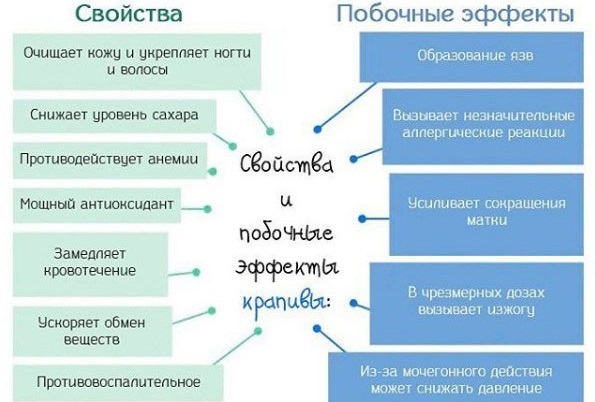Irregular menstrual cycle may be normal or indicate a serious health problem. It is important to be able to distinguish one from the other, to find out and eliminate the cause of violations.
Characterization and definition
The normal monthly cycle is 28 days. Of these, menstrual bleeding accounts for about 7 days. Their greatest intensity is observed on days 2-3. An increase or decrease in the duration of the cycle is considered normal, but not more than a week.
Menstruation that began before the 21st day or later than the 35th day is considered irregular. The first day of the cycle is considered the 1st day of menstruation, the last day is the day before the next menstruation. Irregular periods are one of the types of menstrual irregularities.
There are the following irregularities:
- oligomenorrhea - a reduction in the menstrual cycle;
- polymenorrhea - lengthening of the menstrual cycle;
- amenorrhea - complete cessation of menstruation for a long time.

Cycle failures are most likely for young women under 25. 25-40 years is the age of relative stability, after 40 the risk of violations increases again.
Record content:
-
1 Possible reasons
- 1.1 Natural causes
- 1.2 Physiological causes
- 1.3 Pathological causes
- 2 Diagnostics
- 3 When to see a doctor
-
4 Treatment methods
- 4.1 Medications
- 4.2 Traditional methods
- 4.3 Other methods
- 4.4 How to get pregnant
- 5 Possible complications
- 6 Videos about irregular periods
Possible reasons
The processes occurring in a woman's body and associated with reproductive function are regulated by the hormones estrogen and progesterone. The root cause of irregular periods is a violation of the process of their synthesis and excretion or dysfunction of the ovaries.
Natural causes
This group includes situations when cycle disturbances are normal, natural phenomena and do not require medical intervention.
This is:
| Period | Description |
| Puberty | As a rule, teenage girls have irregular periods. This is due to the instability of the hormonal background characteristic of this age. Normally, the cycle will stabilize by about 15 years. |
| Pregnancy | For a woman of childbearing age, this is an obvious reason for a delay in menstruation. |
| Breastfeeding period | Lactation hormones also affect your monthly cycle. They cause a complete absence of menstruation or an irregular cycle. |
| Age after 35 years | Many women who have crossed this age line, there is a decrease in the duration of menstruation up to 5 days. |
| Premenopausal period | When processes are triggered in the body that are opposite to those of puberty, but also accompanied by sharp changes in hormonal levels |
Physiological causes
This group includes factors that cause a normal reaction from the reproductive system in the form of a violation of the monthly cycle.
Among them:
- nervous overwork, severe stress;
- a sharp loss of fat mass due to strict diets, poor nutrition or increased training. Since fat is necessary for the normal synthesis of estrogen, its deficiency results in irregularities in the cycle, and sometimes the complete cessation of menstruation;
- underweight: weight below 45 kg. This is one of the most common reasons for the absence of menstruation in adolescent girls;
- recent severe illnesses. They take away strength from the body and it begins to "save" on the production of hormones;
- radical change in climate or time zone. This often leads to short-term disruption in the monthly cycle;
- abrupt withdrawal of contraceptive pills containing female hormones. If they are taken for a long time, the body gets used to receiving them from the outside and now it takes time to start synthesizing them again on its own;
- incorrect position of the uterine spiral.
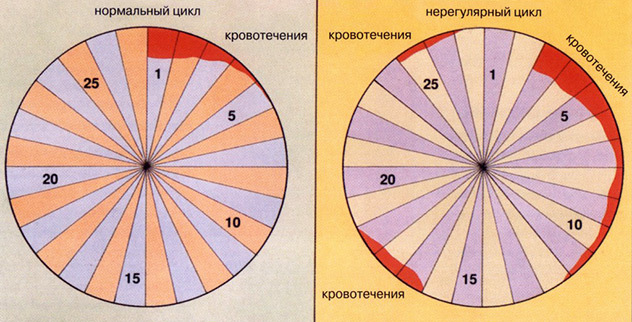
An irregular menstrual cycle can be triggered by taking various hormones, antibiotics, and corticosteroids. As a rule, when the factor that caused the violation of the cycle is eliminated, it recovers spontaneously after some time, without requiring treatment.
To find out the exact cause of the violations, it is advisable to consult a doctor. This is especially important if the normal cycle does not recover for a long time.
Pathological causes
This group includes diseases that disrupt the work of the ovaries.
Pathological causes can cause violations:
- primary, manifested during the formation of the girl's cycle;
- secondary: failures in an already established cycle in an adult woman.
The 1st group includes:
- anomalies in the development of the genital organs caused by any diseases of the ovarian lesion;
- insufficient development of the pituitary gland;
- delays in sexual development. They are manifested by the absence of secondary sexual characteristics.
The causes of menstrual irregularities in an adult woman can be diseases of the genital organs or endocrine pathologies.
The most common gynecological causes of irregularities are:
- complications that developed after an abortion;
- ovarian diseases: polycystic, endometriosis,
- endometriosis of the uterus;
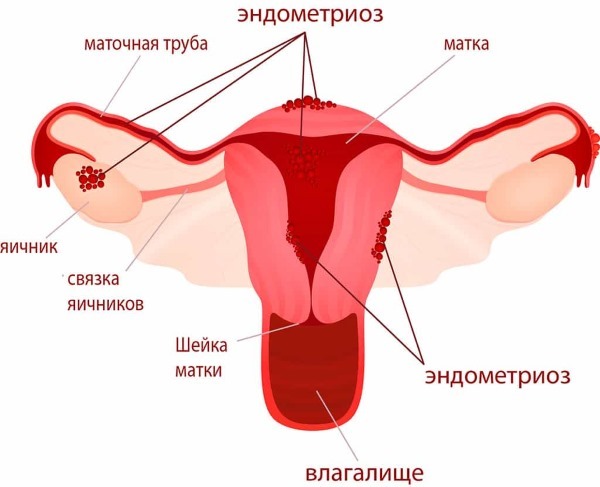
- inflammatory diseases affecting the uterus, ovaries and fallopian tubes;
- neoplasms in the uterus or ovaries.
Endocrine pathologies include diseases:
- hypothalamus;
- pituitary gland;
- adrenal glands;
- thyroid gland.
Persistent changes in the duration of the cycle are possible for reasons not related to fertility, including:
- hereditary diseases;
- blood clotting disorders;
- gastrointestinal diseases;
- obesity, anorexia;
- tuberculosis;
- neuropsychiatric disorders.
Pathological disorders of the menstrual cycle require adequate treatment of the underlying disease that caused them, and the use of a set of measures aimed at normalizing menstruation. In the absence of treatment, the cycle is not restored, the disorders progress, becoming more and more pronounced.
Diagnostics
Determining the cause of an irregular cycle, given the large number of possible causes, is difficult. Initially, the doctor examines the history and interviews the patient.
When interviewed, it usually turns out:
- the age at which menarche appears;
- the date of the start of the last menstrual period;
- the nature of the violations and how long ago they have occurred;
- accompanying symptoms;
- events preceding failures in the loop.
Further, a standard gynecological examination is carried out and, based on the results of the data obtained, the doctor makes a preliminary diagnosis.
To confirm and clarify it, the patient can be assigned the following types of hardware and laboratory tests:
- Ultrasound of the pelvic organs, adrenal glands and thyroid gland;
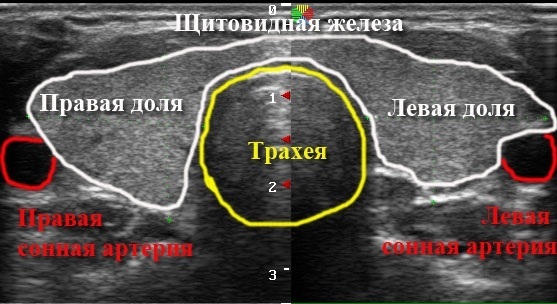
- CT and MRI of the uterus and ovaries. Today it is the most informative research method;
- tomography of the brain;
- calposcopy of the cervix;
- diagnostic curettage (curettage);
- biopsy of vaginal tissue;
- blood tests for hormones, tumor markers and biochemical;
- a smear on the flora to detect genital infections.
Depending on the information obtained during the examination, the patient may be it was proposed to undergo additional examination by other specialists:
- endocrinologist;
- neuropathologist;
- oncologist.
You can get a full diagnosis at any medical center. The cost of the examination varies from 1000 to 2000 rubles.
When to see a doctor
Ideally, a visit to a doctor is recommended for any irregularities in a woman's menstrual cycle, regardless of age. Only a specialist will be able to accurately determine their cause and the degree of its severity.
The following situations deserve special attention:
- irregular cycle or complete absence of menstruation in a girl who is already 15 years old. This may indicate the presence of genital pathology;
- long delay in the premenopausal period. At this age, it can be caused not only by the onset of menopause, but by pregnancy and numerous female diseases, the risk of which increases significantly after 45 years;
- suspicion of pregnancy. An early visit to a doctor will allow you to more accurately set the date, identify possible anomalies and perform an abortion in a gentle way;
- cycle disorders are chaotic and have no apparent cause: one of the symptoms of uterine cancer;
- absence of menstruation for 6 months or more, with the exception of pregnancy;
- the presence of other alarming symptoms: vaginal discharge, itching in the genital area, general malaise;
- painful periods;
- cycle disorders that developed against the background of the underlying disease.
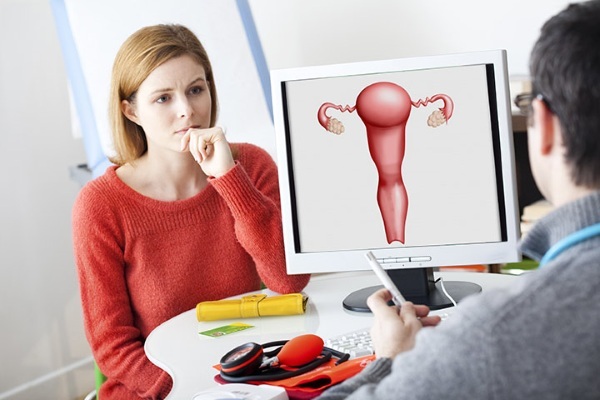
In the presence of such problems, they usually turn to a gynecologist, but it is possible that he will refer the patient to:
- endocrinologist;
- oncologist;
- nutritionist;
- traumatologist;
- gastroenterologist;
- psychotherapist.
Treatment methods
An irregular menstrual cycle can be cured, the main thing is to determine the factor that caused its violation.
Therapeutic measures are aimed at:
- treatment of the underlying disease;
- normalization of the cycle;
- replenishment of blood loss (with frequent and heavy menstruation).
If cycle disturbances are caused by external causes not related to pathologies, then treatment is aimed at normalizing it.
The patient can be recommended:
- enhanced nutrition - for disorders associated with lack of mass, anorexia, depletion of the body;
- a diet aimed at normalizing weight - with obesity;
- decrease in the intensity of training - in case of failures due to excessive physical exertion;
- a set of measures that strengthen the nervous system - in case of stresses that provoked cycle disturbances.
Medications
The doctor may prescribe drugs that regulate the duration of the cycle:
-
Remens. It is a homeopathic remedy that comes in the form of drops. Reception scheme: 10 drops 3 times a day before meals, price - from 200 rubles;
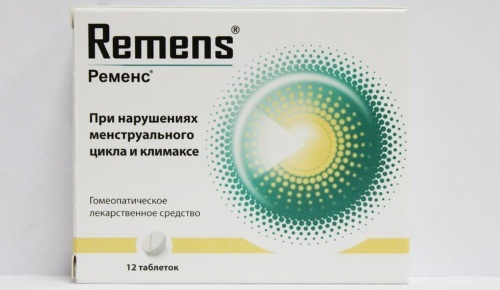
- Cyclodinone. These are drops to be taken every morning (40 drops) for 3 months. Price - from 480 rubles.
With frequent and abundant menstruation, hemostatics are indicated:
- Tranexam. The drug is available in tablets of 250 and 500 mg, the daily dose is 100 mg. It is taken twice a day, regardless of food intake, the course is no more than 4 days. Price - from 275 rubles;
- Vikasol. Available in 15 mg tablets, the regimen is strictly according to the doctor's recommendation, the price is from 28 rubles;
- Etamsilat. The product is available in ampoules of 1 ml (250 mg of active substance), a daily dose of 10-20 mg per kg of body weight. Reception scheme - 3-4 times a day, price - from 79 rubles.
An irregular menstrual cycle helps to normalize contraceptives:
- Regulon. Tablets taken daily for the 21st day, starting on the 1st day of menstruation, then a 7-day break. Packing price - from 550 rubles;
- Yarina. It is used similarly to Regulon, the price of a package is from 990 rubles.
With a deficiency of the hormone progesterone, drugs are prescribed to compensate for its deficiency:
- Utrozhestan. The daily dose is 200-300 mg, divided into 2 doses (morning and evening), price - from 258 rubles;
-
Duphaston. It is taken 1 tablet twice a day from the 11th to the 25th day of the cycle, the price is from 627 rubles.
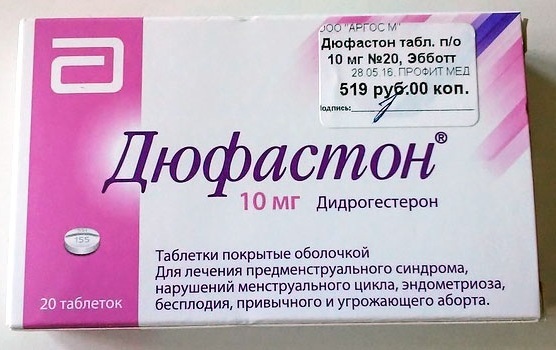
It must be remembered: if the factor that caused the disruption of the monthly cycle is not eliminated, the above drugs will give only a short-term effect!
Traditional methods
The action of folk remedies is based on the presence in their composition of phytoestrogens - hormone-like compounds that can cause the same effect as female sex hormones, as well as on the hemostatic and analgesic properties of some plants.
Phytopreparations will help restore the stability of the cycle, disturbed by:
- a sharp change in climate;
- great weight loss;
- physical overload;
- stress.
If the irregularity of menstruation is a symptom of any disease, then alternative methods can be used as a means of complementing drug treatment.
In the arsenal of traditional medicine:
| Recipe | Cooking steps |
| Infusion of the highlander bird | 1. Pour 20 g of dry grass with 1 tbsp. steep boiling water. 2. After cooling, drain Drink 1 tbsp. l. three times a day. The infusion has a hemostatic and analgesic effect |
| Strawberry leaf | 1. Grind the sheet. 2. Pour boiling water over (for 1 tbsp. spoon of crushed leaf 400 g of water). 3. Insist for 8 hours, then strain. Drink with heavy and frequent menstruation for ½ infusion every day |
| Marigold color | 1. 0.5 tbsp. l. pour 1 tbsp. boiling water. 2. Insist. Drink 3 times a day to stabilize the cycle |
| Viburnum bark | 1. Grind, add water (1 tbsp. spoon - 1 tbsp. water). 2. Boil over low heat, covered for 15 minutes. 3. Cool, drain. Drink 1 tbsp. l. three times a day with heavy periods |
| Nettle | 1. Pour boiling water over the plant (for 20 g of herbs - 1 tbsp. water). 2. Boil for 10 minutes. Drink 1 tbsp daily. broth during the day (for 4-5 receptions). Nettle has hemostatic properties and is able to increase hemoglobin |
| Ruta | 1. Boil 100 g of water, reduce heat to low. 2. Add 1 tsp to the water. l. finely chopped leaves, warm up without boiling for 15 minutes. 3. Strain and drink on an empty stomach once with scanty menstruation (5-6 hours before meals) |
| Phyto collection for polymenorrhea | 1. Take equally St. John's wort, yarrow, licorice root, juniper berries, pour boiling water (1 tbsp. spoon 1 tbsp. boiling water). 2. Warm up in a water bath for half an hour. Take 2 tbsp in the evening. warm broth for 3 days (26, 27, 28 days of the cycle) with a tendency to delays |
| Phyto-collection for oligomenorrhea | 1. Take in equal shares the grass of Potentilla goose, yarrow and valerian root. 2. Grind the grass and pour boiling water (1 tbsp. boiling water - 2 tsp; l. mixture). Drink from the 1st day of menstruation until their end |
Other methods
To restore the menstrual cycle in gynecology, along with drug treatment, physiotherapy methods are widely used. They enhance the effect of drugs and minimize their dose.
Most often used:
- magnetotherapy - for inflammatory diseases of the uterus and ovaries;
- ultrasound that stimulates the production of hormones by the ovaries;
- vibration massage that removes stagnation. It can also be used for unstable periods caused by anomalies in the development of the genital organs.
- phonophoresis - a method that allows you to deliver drugs directly to the "site of action". It is used for chronic instability of the cycle.
If it is impossible to solve the problem with conservative methods, surgical treatment is used, which is indicated for:
- myoma of large sizes, showing a tendency to rapid growth, painful;
- refractory polycystic ovary;

- endometriosis of the uterus - with multiple and deep foci. An organ-preserving operation is performed to remove them. With an actively progressive disease and the patient is over 40 years old, complete removal of the uterus and appendages.
How to get pregnant
The best solution if you want to get pregnant, if the cycle is unstable, would be to consult a doctor for advice and to find out the causes of the problem. In the presence of pathology, it is initially necessary to perform the treatment of the underlying disease.
Then the woman is assigned:
- drugs that stimulate ovulation. During their admission, the patient regularly undergoes ultrasound studies in order to determine the readiness of the uterus for embryo implantation and the degree of follicle maturity;
- when the endometrium reaches a thickness of 1 cm and the follicle size increases to 18 mm, the hCG hormone is administered to the woman, which stimulates the development of the corpus luteum.
Stimulation is performed for 3 cycles, after which a woman can be prescribed drugs containing progesterone, which are taken from the 16th to the 26th day of each cycle (3 cycles in total).
Stimulation of ovulation is controlled by measuring rectal temperature, ultrasound studies. When done correctly, it normalizes the monthly cycle and significantly increases the chances of pregnancy.
Attempts to get pregnant without going to a doctor are justified if the irregularity of menstruation is not associated with diseases of the reproductive system and is explained "Frivolous" reasons:
- stress;
- abrupt climate change;
- physical overwork.
The following sequence of actions is recommended:
- elimination of the factor that caused the violation;
- treatment for 3-4 months with folk remedies;
- determination of the moment of ovulation by a jump in basal temperature of 1 degree. The temperature must be measured every morning, at the same time, without getting out of bed. Measurements over several months will determine the days of highest fertility (day of ovulation and 5 days before it);
- intense sex during this period.
When starting self-medication, you should remember: it does not always give the desired effect, and in some cases it can harm, causing complications.
Possible complications
An irregular menstrual cycle associated with external factors is not dangerous, provided that the frequency of menstruation is restored as early as the next month.
If the failures follow one after the other, and the woman is in no hurry to pay a visit to the antenatal clinic, the following types of complications are possible:
| Complications | Description |
| Polymenorrhea (lengthening of the cycle, which is usually associated with an excess of estrogen) | An excess of female hormone in the short term will affect the complete cessation of menstruation and, as a result, infertility. In the distant future, polymenorrhea can provoke the appearance of various gynecological diseases:
|
| Oligomenorrhea (shortened cycle times) | Anemia joins the list of possible problems - a natural consequence of large blood loss, which:
|
It is impossible to ignore the fact that, without noticing the irregularity of the cycle, you can skip the initial stage of a dangerous pathology.
Problems can be avoided if you are attentive to the body and try not to expose it to unnecessary shocks in the form of hungry diets, exhausting sports, constant stress. It is also important to regularly undergo preventive examinations and consult a doctor for any irregularities in the menstrual cycle.
Videos about irregular periods
Irregular periods:


